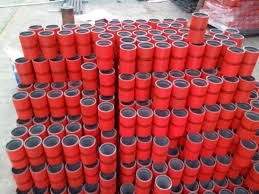- Afrikaans
- Albanian
- Amharic
- Arabic
- Armenian
- Azerbaijani
- Basque
- Belarusian
- Bengali
- Bosnian
- Bulgarian
- Catalan
- Cebuano
- Corsican
- Croatian
- Czech
- Danish
- Dutch
- English
- Esperanto
- Estonian
- Finnish
- French
- Frisian
- Galician
- Georgian
- German
- Greek
- Gujarati
- Haitian Creole
- hausa
- hawaiian
- Hebrew
- Hindi
- Miao
- Hungarian
- Icelandic
- igbo
- Indonesian
- irish
- Italian
- Japanese
- Javanese
- Kannada
- kazakh
- Khmer
- Rwandese
- Korean
- Kurdish
- Kyrgyz
- Lao
- Latin
- Latvian
- Lithuanian
- Luxembourgish
- Macedonian
- Malgashi
- Malay
- Malayalam
- Maltese
- Maori
- Marathi
- Mongolian
- Myanmar
- Nepali
- Norwegian
- Norwegian
- Occitan
- Pashto
- Persian
- Polish
- Portuguese
- Punjabi
- Romanian
- Russian
- Samoan
- Scottish Gaelic
- Serbian
- Sesotho
- Shona
- Sindhi
- Sinhala
- Slovak
- Slovenian
- Somali
- Spanish
- Sundanese
- Swahili
- Swedish
- Tagalog
- Tajik
- Tamil
- Tatar
- Telugu
- Thai
- Turkish
- Turkmen
- Ukrainian
- Urdu
- Uighur
- Uzbek
- Vietnamese
- Welsh
- Bantu
- Yiddish
- Yoruba
- Zulu
tubing collar
Understanding Tubing Collars in Oil and Gas Operations
In the oil and gas industry, the integrity and efficiency of drilling operations depend heavily on various components, and one of the crucial elements is the tubing collar. This article explores the significance of tubing collars, their functions, types, and importance in ensuring safe and efficient production in oil and gas extraction.
What is a Tubing Collar?
A tubing collar is a specific type of coupling installed in the tubing string of a well. It serves to connect sections of tubing together, allowing for the seamless transmission of oil or gas from the reservoir to the surface. Tubing collars are designed to withstand high pressure and corrosive environments typically encountered in oil and gas wells.
Functions of Tubing Collars
The primary functions of tubing collars include
1. Connection and Support Tubing collars provide a robust connection between different segments of tubing. This connection is critical as it maintains the structural integrity of the tubing string, ensuring that it can withstand the stresses and pressures encountered during extraction.
2. Weight Distribution Collars help distribute the weight of the tubing string more evenly. This is essential in preventing localized stresses that can lead to tubing failure. By ensuring an even weight distribution, collars also contribute to the overall stability and longevity of the tubing.
3. Facilitating Equipment Installation Tubing collars often come with features that allow for the easy attachment of downhole equipment, such as packers, plugs, and gauges. This facilitates maintenance and enhancement activities during the lifetime of the well.
4. Pressure Management Certain tubing collars are engineered to connect with pressure control devices, allowing operators to manage and monitor the pressures within the well effectively. This capability is vital in preventing blowouts and ensuring the safe extraction of hydrocarbons.
5. Fluid Movement Tubing collars play a significant role in facilitating the movement of fluids (either oil or gas) through the tubing string. Their design minimizes turbulence, ensuring that the flow remains efficient.
tubing collar

Types of Tubing Collars
There are several types of tubing collars, each designed for specific applications and conditions
1. Standard Tubing Collars These are the most commonly used collars, providing a basic connection between tubing sections. They are suitable for a wide variety of applications.
2. Quick-Connect Collars Designed for operations where speed and efficiency are paramount, quick-connect collars allow for rapid assembly and disassembly, minimizing downtime during drilling operations.
3. Heavy-Duty Collars In harsh environments or high-pressure wells, heavy-duty collars are essential. They are constructed from robust materials, offering enhanced strength and resistance to corrosion and fatigue.
4. Specialized Collars There are also collars designed for particular functions, such as those that can accommodate additional tools or allow for the integration of measurement devices within the tubing string.
Importance of Tubing Collars
The importance of tubing collars in the oil and gas sector cannot be overstated. These components are integral to the safety and efficiency of drilling operations. A failure in the tubing string due to substandard connections can lead to catastrophic events, including blowouts, leaks, and loss of expensive resources.
Moreover, as the industry pushes into more challenging environments, such as deep-water drilling and unconventional resource extraction, the demand for innovative and high-performing tubing collars will only grow. Advanced materials and designs are being developed to meet the increasing pressures and challenges posed by these operations.
Conclusion
In conclusion, tubing collars are a fundamental part of the oil and gas industry's infrastructure, essential for connecting tubing sections, ensuring pressure management, and facilitating the safe extraction of hydrocarbons. Understanding their functionality and importance helps in appreciating the complexity and safety measures inherent in oil and gas operations. As the industry continues to evolve, so too will the technology and design of tubing collars, ensuring that they meet the demands of modern-day drilling challenges.
-
Tubing Pup Joints: Essential Components for Oil and Gas OperationsNewsJul.10,2025
-
Pup Joints: Essential Components for Reliable Drilling OperationsNewsJul.10,2025
-
Pipe Couplings: Connecting Your World EfficientlyNewsJul.10,2025
-
Mastering Oilfield Operations with Quality Tubing and CasingNewsJul.10,2025
-
High-Quality Casing Couplings for Every NeedNewsJul.10,2025
-
Boost Your Drilling Efficiency with Premium Crossover Tools & Seating NipplesNewsJul.10,2025







